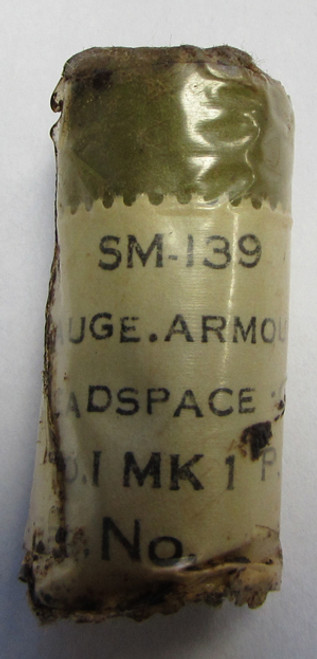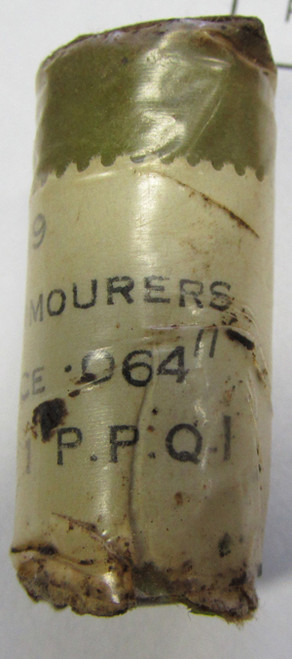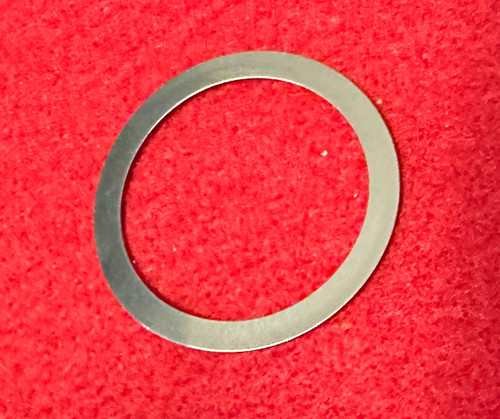Product Description
9mm SMG Chamber Wear and Headspace Gauge
To ensure the safe operation of 9mm Fixed-Firing-Pin (FFP) Blow-Back (BB) Submachine Guns (SMGs), chamber wear and headspace should be verified.
Since SMGs don't typically show a lot of bore wear compared to chamber wear due to the low velocity of the bullets, worn or damaged chambers are very hard to visually detect. So even a nice-looking barrel may have serious safety and performance problems.
This tool has 2 main features:
- A .365ø tip for "plunk" testing the front chamber step. This is especially important since worn SMG chambers can result in out-of-battery discharge if the case mouth doesn't make a firm 'stop' at the front of the chamber.
- Headspace measuring lines for rear case protrusion for BRP/Stemple/Suomi 9mm setups and STEM SMGs. If you measure the depth of your bolt face pocket you can use these as reference lines for inspecting headspace for other SMGs as well.
Info and Instructions (pdf link)
SAFETY Considerations for Fixed-Firing-Pin (FFP) Blow-Back (BB) Submachine Guns (SMGs)
The first step is to fully understand how these machine guns function. The cycle process is as follows:
(The World’s Submachine Guns, Vol. 1, by Nelson & Lockhoven)
1. The weapon fires from the open bolt.
2. Upon insertion of a loaded magazine, the retracting handle attached to the bolt is drawn to the rear, compressing the main operating spring, and the bolt is retained in the open position by the sear.
3. The first cartridge in the magazine is forced into the path of the bolt by the magazine spring.
4. Pressing on the trigger causes the sear to release the bolt, which is pushed forward by the compressed main operating spring, stripping a round from the magazine, and feeding it into the chamber.
5. As the firing pin strikes the primer, the extractor snaps over and engages the cartridge rim. (Note: in the STG system as with many other SMGs, this process is reversed. The extractor is designed to prevent firing pin-to-primer contact until the cartridge is fully chambered.)
6. When the cartridge fires, the pressure exerted in all directions drives the bullet forward and the case rearward, driving the bolt to the rear. Due to the much greater mass of the bolt, as compared with the weight of the bullet, initial velocity of the bolt is low, permitting the bullet to leave the barrel, and allowing the high pressure to drop, before the bolt opens.
7. The energy imparted to the bolt carries it to the rear, compressing the main operating spring. During rearward travel of the bolt, the empty cartridge case is held in the bolt face until the case strikes the ejector. The empty shell is then pivoted around the extractor and thrown out the ejection port in the receiver.
8. The backward movement of the bolt is stopped by the compressed main operating spring and by the impact of the rear of the bolt against the receiver cap or buffer. The compressed main operating spring then drives the bolt forward, and the cycle repeats, until pressure on the trigger is released, or the magazine is empty.
FFP / BB SMGs do not possess any locking system to rigidly lock the chamber at the point of firing. As noted in step 6 of the cycle process: “When the cartridge fires, the pressure exerted in all directions drives the bullet forward and the case rearward, driving the bolt to the rear. Due to the much greater mass of the bolt, as compared with the weight of the bullet, initial velocity of the bolt is low, permitting the bullet to leave the barrel, and allowing the high pressure to drop, before the bolt opens.” Thus, only low-pressure pistol ammo is suitable for use in these systems. A failure in the cartridge, feeding process, or bolt face my result in the system jamming or firing out-of-battery. For example, a miss-fed cartridge may be deformed and not properly seat in the chamber when fired resulting in the bullet failing to leave the barrel and the pressure to explode at the chamber end. A Note on Reloaded Ammo: Poorly sized or swaged reloads can also result in improper chambering. Squib rounds are especially dangerous as the system will continue to cycle with an obstructed barrel.






















